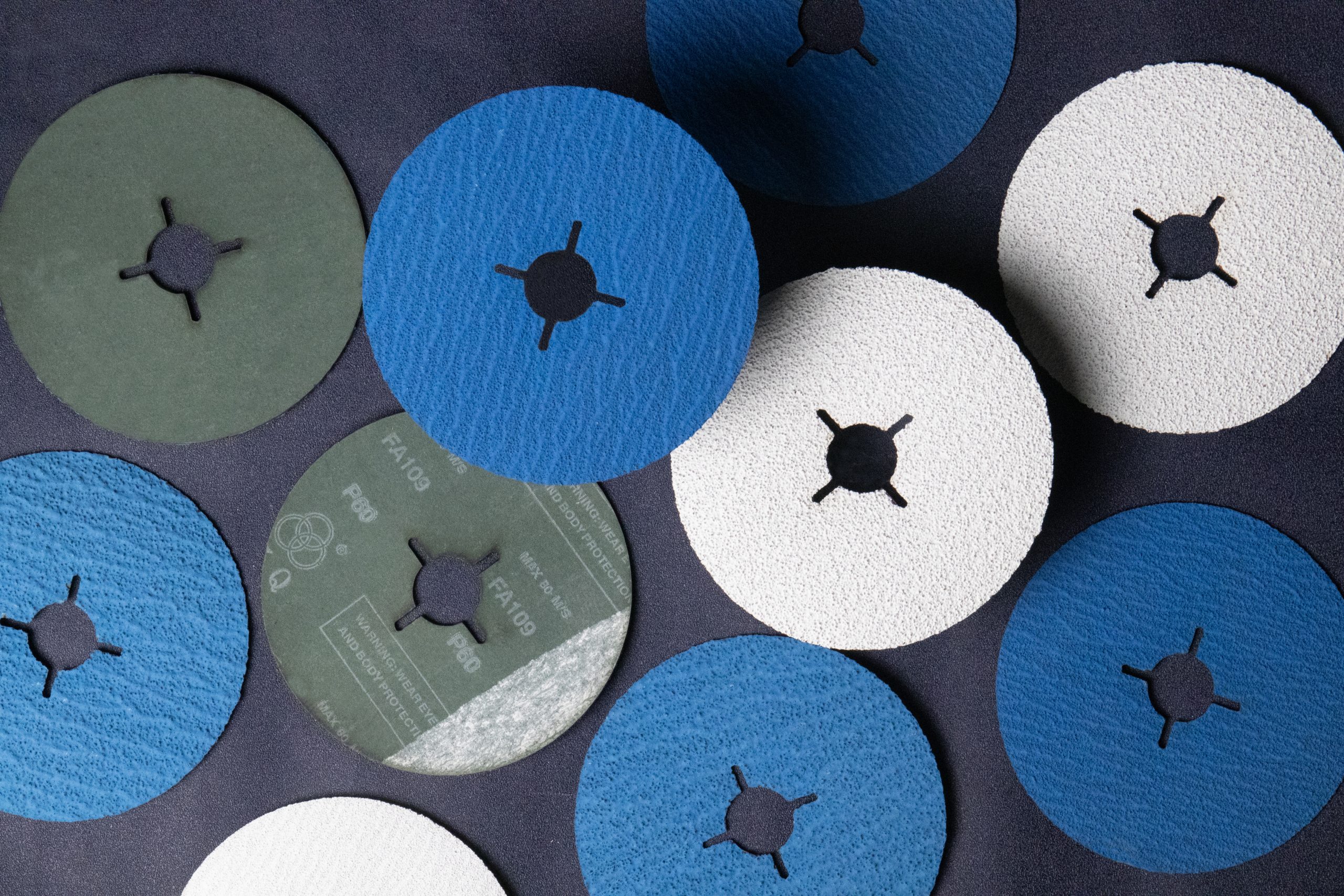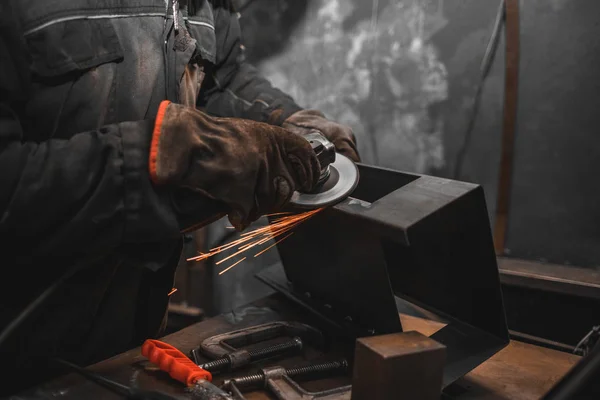Fiber discs are an essential tool in various industrial applications, known for their effectiveness in grinding, sanding, and finishing tasks. The performance of fiber discs largely depends on the type of abrasive grain used. Understanding which cutting grains are best for fiber discs can help users select the right tool for their specific needs, enhancing productivity and achieving superior results. This article delves into the characteristics, applications, and advantages of different cutting grains used in fiber discs, including aluminum oxide, zirconia alumina, ceramic alumina, and silicon carbide.
Aluminum Oxide
Characteristics
Aluminum oxide is one of the most commonly used abrasive grains in fiber discs. It is known for its durability and versatility, making it suitable for a wide range of applications. This grain is available in various forms, such as brown, white, pink, and ruby, each with slightly different properties.
Applications
Aluminum oxide fiber discs are ideal for general-purpose grinding and sanding tasks. They are effective on a variety of materials, including:
- Mild Steel: Ideal for removing rust, paint, and weld spatter.
- Wood: Suitable for smoothing rough surfaces and preparing wood for finishing.
- Plastic:Efficient for sanding plastic parts without causing excessive heat buildup.
Advantages
- Durability: Long-lasting performance, even under heavy use.
- Versatility: Suitable for a wide range of materials and applications.
- Cost-Effective:Generally more affordable compared to other abrasive grains.
Zirconia Alumina
Characteristics
Zirconia alumina is a tough, durable abrasive grain that provides high performance and long life. It is made by fusing zirconia and alumina at high temperatures, resulting in a grain that is harder and more durable than aluminum oxide.
Applications
Zirconia alumina fiber discs are designed for heavy-duty grinding and finishing tasks. They are particularly effective on:
- Stainless Steel: Efficient for grinding and blending welds, removing burrs, and surface preparation.
- High-Tensile Metals: Suitable for use on alloys and other high-strength materials.
- Cast Iron: Effective in removing casting flash and surface imperfections.
Advantages
- High Durability:Longer lifespan compared to aluminum oxide, making it cost-effective for heavy-duty applications.
- Self-Sharpening: The grain fractures during use, constantly exposing new sharp edges.
- Cool Cutting:Generates less heat, reducing the risk of workpiece damage.
Ceramic Alumina
Characteristics
Ceramic alumina is a premium abrasive grain known for its extreme hardness and toughness. It is created through a sol-gel process that produces a fine, uniform crystal structure, resulting in a grain that is both hard and friable.
Applications
Ceramic alumina fiber discs are used for the most demanding grinding and finishing tasks, including:
- Aerospace Alloys: Ideal for grinding and finishing high-strength, heat-resistant materials.
- Stainless Steel: Provides efficient material removal and a fine finish on stainless steel components.
- Carbon Steel: Effective for heavy stock removal and surface preparation.
Advantages
- Exceptional Durability: Longer life than both aluminum oxide and zirconia alumina, even under extreme conditions.
- High Material Removal Rate: Efficient cutting action reduces processing time.
- Cool Cutting: Minimizes heat buildup, preventing thermal damage to the workpiece.
Silicon Carbide
Characteristics
Silicon carbide is a very hard and sharp abrasive grain known for its aggressive cutting action. It is typically green or black in color and is used for applications requiring a high degree of precision and fine finishes.
Applications
Silicon carbide fiber discs are suited for specialized applications, including:
- Glass: Efficiently cuts through glass and ceramic materials.
- Stone: Ideal for grinding and polishing stone surfaces.
- Non-Ferrous Metals: Suitable for use on aluminum, brass, and bronze.
Advantages
- Aggressive Cutting:Fast material removal due to its sharp and hard nature.
- Precision Finishing: Provides a fine finish on hard, brittle materials.
- Low Heat Generation: Reduces the risk of workpiece damage due to heat buildup.
Comparison of Cutting Grains
When selecting the best cutting grain for fiber discs, it is essential to consider the specific requirements of the task at hand. Here is a comparison of the different cutting grains based on various factors:
Durability
- Ceramic Alumina: Offers the highest durability, making it suitable for demanding applications.
- Zirconia Alumina: Provides good durability, ideal for heavy-duty tasks.
- Aluminum Oxide:Moderate durability, suitable for general-purpose use.
- Silicon Carbide: Less durable compared to other grains, but effective for specific applications.
Cutting Speed
- Ceramic Alumina: Provides the fastest cutting speed due to its hardness and friability.
- Zirconia Alumina: Offers a high cutting speed with its self-sharpening properties.
- Aluminum Oxide: Moderate cutting speed, suitable for a wide range of applications.
- Silicon Carbide:High initial cutting speed, but wears down more quickly.
Versatility
- Aluminum Oxide: The most versatile, suitable for various materials and applications.
- Zirconia Alumina: Versatile but best suited for metalworking tasks.
- Ceramic Alumina: Less versatile but excels in demanding applications.
- Silicon Carbide:Specialized for hard and brittle materials.
Cost
- Aluminum Oxide: Generally the most cost-effective option.
- Zirconia Alumina: More expensive than aluminum oxide but offers better performance and durability.
- Ceramic Alumina:The most expensive but provides the best performance and longest life.
- Silicon Carbide: Moderately priced, suitable for specialized applications.
Choosing the Right Grain for Your Application
Selecting the right cutting grain for your fiber disc depends on several factors, including the material being worked on, the desired finish, and the budget. Here are some guidelines to help you make the best choice:
- For General-Purpose Use
Aluminum oxide is an excellent choice for general-purpose grinding and sanding tasks. It offers good performance on a wide range of materials and is cost-effective, making it suitable for various applications.
- For Heavy-Duty Metalworking
Zirconia alumina is ideal for heavy-duty metalworking tasks. Its durability and self-sharpening properties ensure long-lasting performance, making it a cost-effective choice for grinding and finishing metals like stainless steel and high-tensile alloys.
- For High-Performance Applications
Ceramic alumina is the best choice for high-performance applications. It provides the fastest cutting speed and longest life, making it suitable for demanding tasks involving aerospace alloys, stainless steel, and carbon steel.
- For Specialized Applications
Silicon carbide is the preferred choice for specialized applications requiring precision and fine finishes. It is effective on hard and brittle materials like glass, stone, and non-ferrous metals.
Conclusion
Choosing the best cutting grains for fiber discs requires a thorough understanding of the material to be worked on, the desired finish, and the specific application requirements. Aluminum oxide offers versatility and cost-effectiveness for general-purpose use, while zirconia alumina excels in heavy-duty metalworking with its durability and self-sharpening action. Ceramic alumina is unmatched for high-performance applications due to its exceptional durability and cutting speed, and silicon carbide is ideal for specialized tasks requiring precision and fine finishes. By selecting the appropriate cutting grain, users can significantly enhance the performance of their fiber discs, achieve superior results, and increase productivity in their grinding, sanding, and finishing operations.


